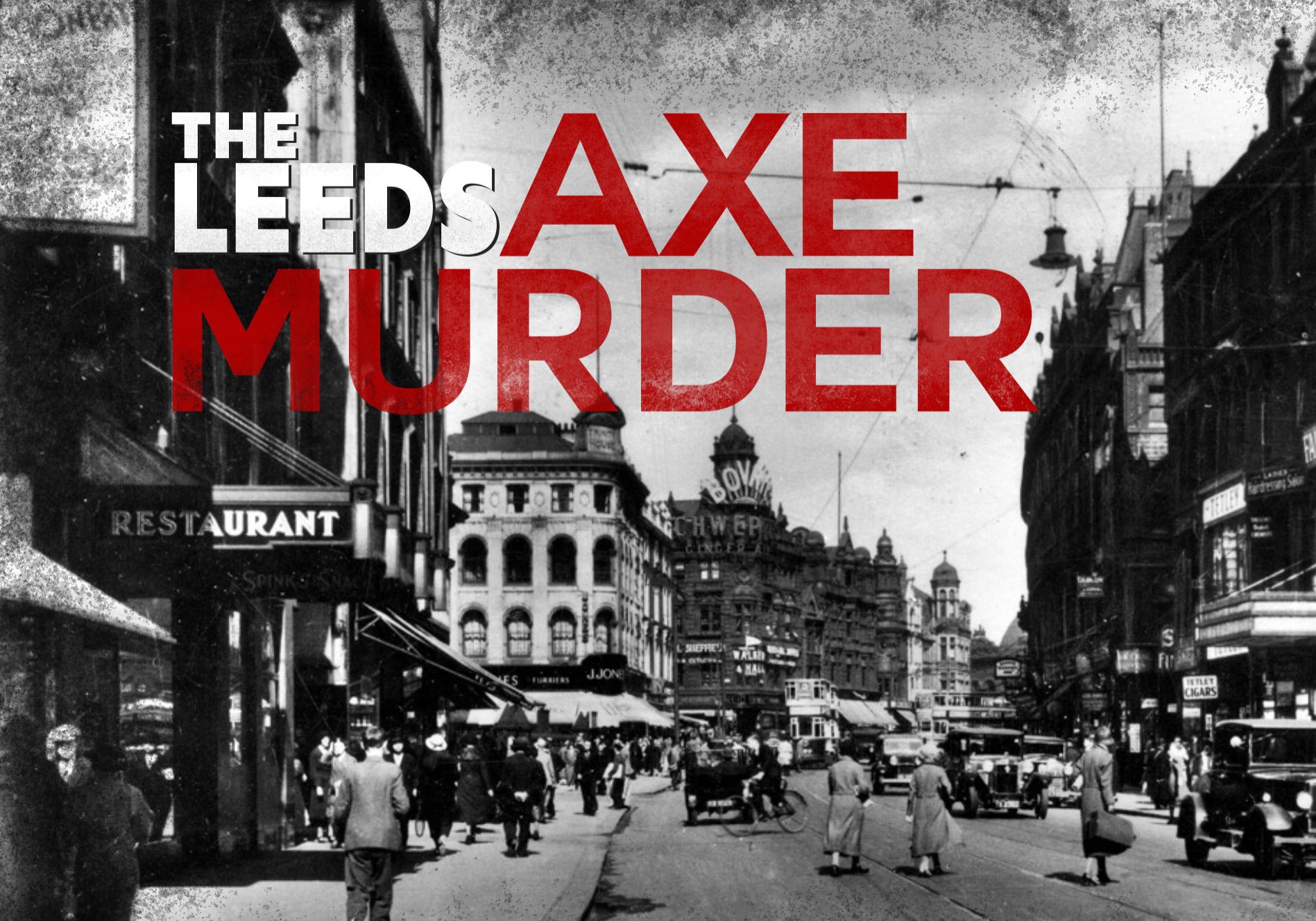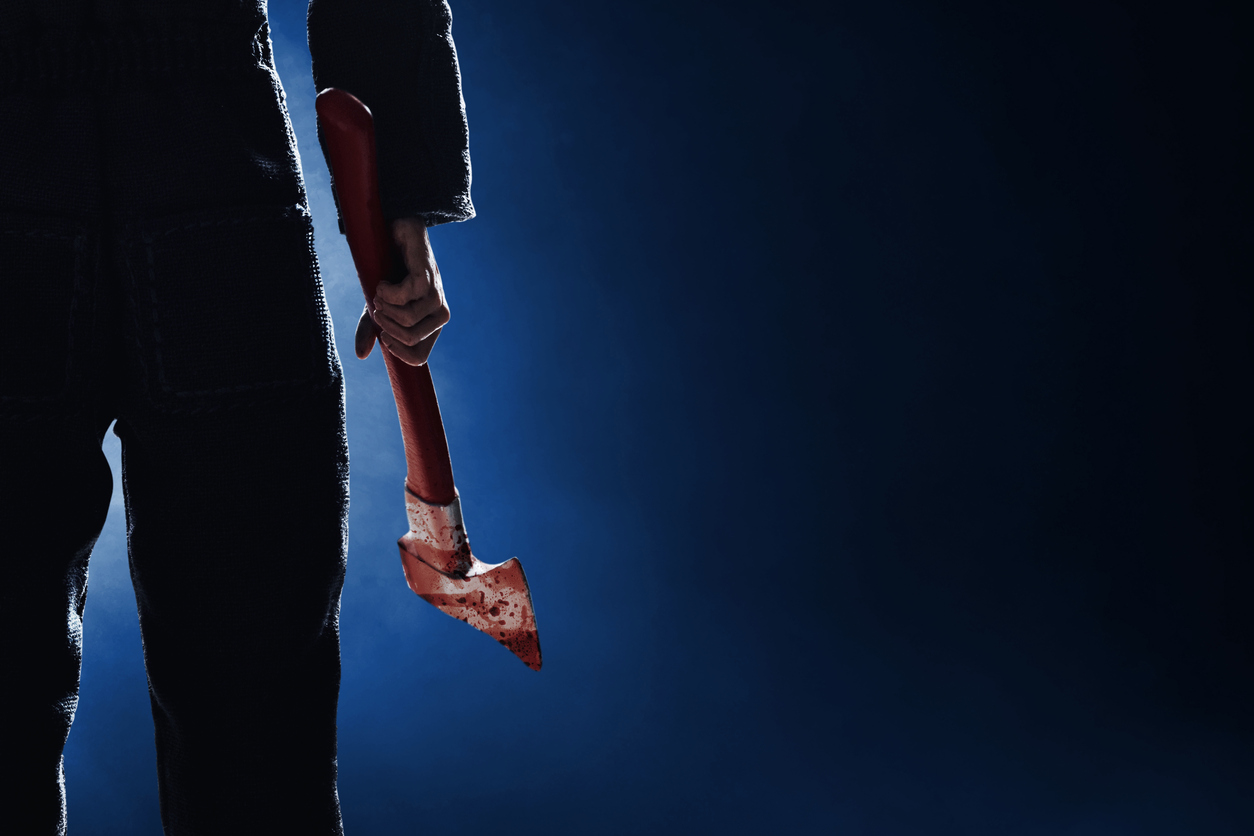
The Leeds Axe Murder
by Neil R Storey
A GRUESOME TALE OF MURDER UP NORTH DURING WARTIME BRITAIN
At approximately 8.10am on the morning of Sunday, 30 April 1945, just days before the end of the war in Europe, electrician Bill Whitaker was walking home from work when he spotted a man lying just inside the gates and behind a black Morris 10 saloon car on the driveway at 176 Beeston Road, Leeds. Mr Whitaker told a Yorkshire Post reporter: I saw a person on the ground… At first I thought it was a man fixing a jack under the back of the car but I was attracted by the stillness of the body and making a closer examination, I saw a patch of red which proved to be blood. I realised that something unusual had happened and I crossed the main road to a telephone booth and informed the police, waiting there until the arrival of the police ambulance.
Police were called to the scene and soon ascertained that the body, which was lying in a large pool of blood, was that of the homeowner Dr David Walker Dewar (42). He had been hacked to death, with eleven separate wounds inflicted upon his head by a hatchet which had shattered the skull into many pieces. The fatal blow was believed to have been the one that cut through the upturned collar of his overcoat, penetrated the lower part of his skull and lacerated his brain. Police surgeon Dr Hoyland Smith was of the opinion that Dr Dewar’s body had been lying there for seven or eight hours before it has been discovered.

Such a serious and violent crime demanded the presence of the most senior police officers, and the chief constable and chief of the CID, Supt Frank Swaby, personally attended the scene and led the investigation. A police appeal, including a description and the number plate of the doctor’s car (DNW 625) was circulated to the press. Dr Dewar’s movements on Saturday night were soon ascertained, up to shortly after midnight when he attended a patient at a public house near his home. He was last seen alone in his car on Beeston Road at 12.40am and was believed to have been killed shortly afterwards.
When Dr Dewar’s body was examined at the scene he was found to be holding the ignition key for his car, and because one of the double gates of his driveway was closed it was suggested he had just driven his car into the yard, got out and was bending down and fastening the gates when he was attacked. The blackout was still in force and there is a good chance he would not have seen his assailant before he was attacked, and may not have even had time to cry out before the fatal blow had been delivered.
“He was also quite a lothario and was having affairs with a number of local women while their soldier husbands were away serving king and country.”
His Chilean-born wife Elizabeth Gemmell Izaat Dewar had gone to bed before midnight and was unaware anything untoward had happened to her husband until the alarm was raised in the morning. Neighbours also heard nothing suspicious during the night. There was no indication of robbery or attempted robbery; in fact there was no apparent motive for the killing and despite a close search of the allotments and fields in the area the murder weapon was not recovered.
The public face of Scot Dr David Dewar was one of respectability. Educated at Wishaw Public School, he qualified at Glasgow University in 1930 and after being in practice in Glasgow and Sheffield he had settled in Leeds about twelve years earlier, after taking over the Beeston practice of the late Dr Crawford. He also held the position of factory medical officer for a Leeds firm of optical instrument makers and took a keen interest in the Medical Practitioners Union. He was a popular man with a wide circle of friends.
He was also quite a lothario and was having affairs with a number of local women while their soldier husbands were away serving king and country. Among them was Mrs Laura Walker (27) of Lady Pit Crescent, Beeston Hill, Leeds. Laura had worked as a tailoress specialising in hand lining but had taken up work as a woodcutting machinist for the war effort.
She worked long hours, but was determined to enjoy her social life. Dewar had been her family doctor since 1933 and she had been flattered by the attention he had paid her in recent years, and they had often been seen out together in his car and visiting pubs. Investigating officers did wonder if this could be a case of a jealous husband finding out about his unfaithful wife on his return from the war, but Laura’s husband, Arthur, was still abroad serving in Italy and he had not been home on leave at the time of the murder. However, unknown to the police, there was Thomas Eric Richardson (28), a surgical-implement maker who lived on Harlech Road, Beeston, who was also on intimate terms with Laura.

On 28 April, Mrs Walker had what newspapers covering the story in 1945 would quaintly call ‘a social appointment’ with Dr Dewar and she had informed Richardson that she was going for a drink with him. Richardson did not want her to go. He was suffering from boils on the neck and he wanted her to dress them. Talk about showing a girl a fun time on a Saturday night.
“Talk about showing a girl a fun time on a Saturday night.”
Laura agreed to see Richardson again that night but only after she had been out with Dewar. She suggested that Richardson could come and see her at her home around midnight. Dr Dewar and Laura visited a number of bars that night and he dropped her back home around 12.30am. She had not been in long before Richardson arrived looking tired and was very morose. Laura dressed his boils and he left about 5.00am.
On 20 May, Laura told Richardson she had been worrying about the murder of Dr Dewar and that she had been questioned by the police. She obviously felt the finger of suspicion was being pointed at her. Richardson asked if she had mentioned his name and she assured him that she had not.
It was at that moment Richardson said, ‘I can tell you who killed Dr Dewar.’ She begged him to tell her so she could be cleared. Richardson clearly loved every moment of having that power, and Laura recalled the moment of his reveal when Richardson said: ‘The fellow that did it had a reason. I did it. I was not going to let him ruin your life.’
Read more about the Leeds Axe Murderer and other wartime murders in The Blackout Murders by Neil R Storey. Published by Pen & Sword.
NorthernLife July/Aug 23




